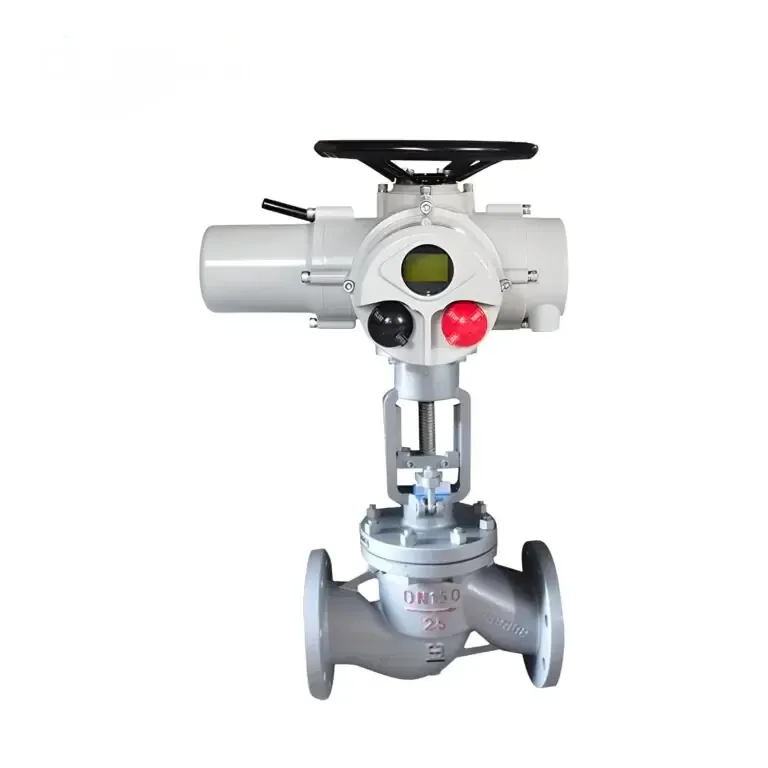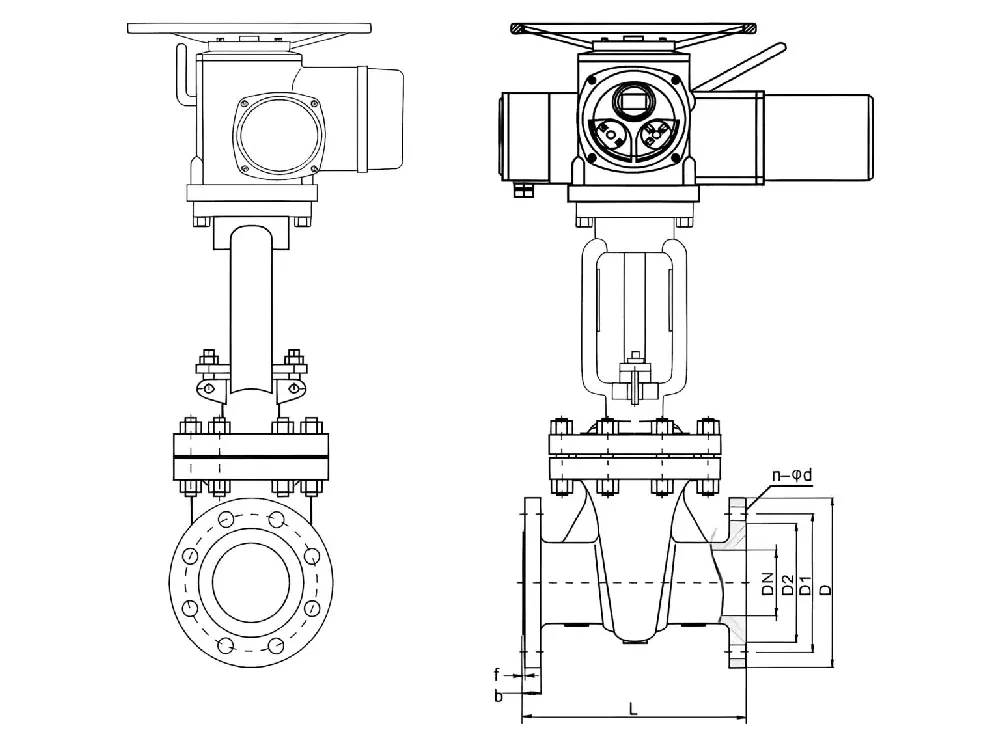
In the age of automation and precision engineering, control valves play a critical role in fluid regulation across various industrial sectors. One type of valve that stands out due to its reliability, accuracy, and adaptability is the multi-turn electric globe control valve. These devices are essential in modern industrial infrastructure, supporting processes in sectors ranging from water treatment to power generation. With increasing demand for automated, smart, and energy-efficient solutions, multi-turn electric globe valves are becoming the preferred choice for engineers and system designers worldwide.
This article provides an in-depth look into the functionality, advantages, applications, and technical considerations surrounding multi-turn electric globe control valves.
A multi-turn electric globe control valve is a type of control valve actuated by an electric motor that turns the valve stem multiple times to open or close the valve. This motion controls the position of a plug or disc inside the valve body, which in turn regulates the flow of fluid through the valve. The "globe" in its name refers to the internal design of the valve body, which resembles a globe-like shape and allows for precise throttling of flow.
Unlike manually operated valves, multi-turn electric globe valves are fully automated and capable of remote operation. The integration of a multi-turn electric actuator enables consistent, reliable, and repeatable flow regulation. These valves are designed for environments where continuous monitoring and adjustment of flow are required, offering a perfect balance of performance, durability, and control accuracy.

The external shell of the valve actuator is typically made from high-grade die-cast aluminum alloy, which provides excellent resistance to corrosion and mechanical wear. Its smooth, sleek appearance is not only aesthetically pleasing but also designed to minimize electromagnetic interference, a critical feature in electrically sensitive environments.
Multi-turn electric globe valves are available in several configurations to meet different application needs:
On/Off (Switch Type): For binary flow control (fully open or fully closed).
Passive Contact Type: Offers signal feedback for system integration.
Proportional Control (Modulating Type): Allows fine-tuned flow adjustments.
Intelligent Control: Equipped with digital controllers for remote operation, diagnostics, and integration with SCADA or DCS systems.
This wide range of functions ensures that the valve can be seamlessly integrated into both basic and complex process systems.
The internal mechanism uses a high-strength worm and worm gear system, which converts the rotary motion of the motor into linear motion of the valve stem. This system provides smooth and efficient torque transmission with high positional accuracy. The worm gear design reduces backlash and mechanical play, ensuring tight control over valve position and minimizing wear over time.
The gear output structure is meticulously engineered to reduce the connection gap between components. This integration greatly enhances transmission accuracy, which is essential for systems requiring frequent flow modulation and feedback.
Safety is paramount in any industrial setting. These valves feature:
H-class high insulation motors for enhanced electrical safety.
AC1500V dielectric strength testing to ensure the motor and circuitry can withstand voltage surges.
Enclosed waterproof enclosures, meeting IP67 or higher protection levels in many cases.
These features guarantee that the actuator remains reliable even under challenging operating conditions such as high humidity, dust, or vibration.
Multi-turn electric globe control valves can be powered by various sources, including:
Single-phase or three-phase AC
DC power supplies
This versatility makes integration into existing systems straightforward and cost-effective.
When the actuator receives a control signal—either from a local controller or a remote SCADA system—it activates the motor to rotate the stem. The stem motion moves the disc or plug vertically, allowing for precise flow control through the valve seat. The valve’s position can be adjusted incrementally, making it ideal for throttling applications that require fine adjustments to maintain system stability.
Position feedback devices such as encoders or potentiometers are often built into the actuator, providing real-time valve position data to the control system. In more advanced models, integrated control modules with LCD displays and keypads allow operators to configure settings and monitor valve status directly.
These valves are used in a wide array of industries, particularly where precise flow regulation and automation are critical:
Regulating flow in filtration systems
Controlling chemical dosing
Managing pressure in distribution networks
Boiler feedwater regulation
Steam control
Cooling system optimization
Managing fluid flow in pipelines
Pressure control in refining processes
Automation of injection systems
Chilled and hot water flow modulation
Central plant automation
Energy optimization systems
Handling corrosive and hazardous fluids
Precision mixing and blending
Safety shutoff systems
These valves offer high-resolution positioning capabilities, allowing for accurate modulation of flow and pressure.
They are compatible with modern control systems and can be operated remotely, saving labor costs and enhancing process control.
Electric actuators require less maintenance compared to pneumatic or hydraulic systems. There are no air lines or compressors, reducing the risk of leaks or pressure loss.
Electric actuators consume power only during actuation and use minimal power to hold a position, unlike pneumatic actuators which require a continuous air supply.
The absence of compressed air or oil eliminates potential hazards, making these valves suitable for explosive or flammable environments (when used with explosion-proof actuators).
To ensure optimal performance and longevity of a multi-turn electric globe control valve, consider the following during installation:
Correct Sizing: Always size the valve based on the flow rate, pressure drop, and media characteristics—not just pipe diameter.
Proper Mounting: Ensure the actuator is mounted upright and aligned to prevent misalignment stress.
Electrical Isolation: Use proper grounding and shielding to avoid electrical noise and surges.
Signal Compatibility: Verify control signal compatibility (e.g., 4-20mA, Modbus, etc.) with your system.
Routine Testing: Periodically cycle the valve to prevent seizing and ensure feedback signals are accurate.
As industries continue to embrace digital transformation, multi-turn electric globe valves are evolving to meet new demands. Recent advancements include:
Smart Actuators: Featuring diagnostics, predictive maintenance alerts, and remote configuration capabilities.
IoT Integration: Real-time data sharing with cloud platforms for enhanced visibility and control.
Fail-safe Designs: Using battery backup or spring-return mechanisms to ensure safe positioning during power loss.
Modular Construction: Enabling easy upgrades or replacements of actuator components without replacing the entire valve.
Multi-turn electric globe control valves represent the pinnacle of flow control engineering, combining precision, durability, and automation to meet the demands of modern industry. Whether you're designing a new system or upgrading existing infrastructure, these valves offer unmatched flexibility and performance across a wide range of applications.
Their robust construction, advanced functionality, and intelligent features make them an essential component in any automated control system. As industry trends continue to shift towards smarter and more efficient operations, multi-turn electric globe valves will remain at the forefront of process innovation.